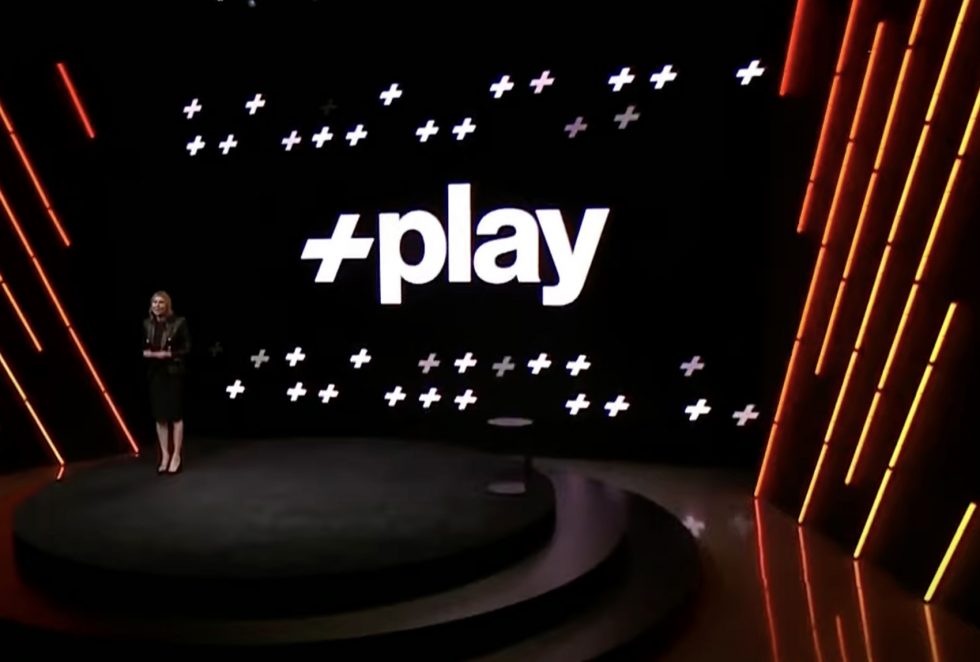Is Verizon Plus Play the True Next-Generation MVPD?
The so-styled ‘+play’ could be a mortal blow for the battered cable TV business, while fixing some of DTC’s most intractable and annoying customer headaches

If you missed Verizon’s investors day briefing last week because it’s not your industry, you would be forgiven for overlooking one of the potentially most consequential announcements in recent times affecting streaming video and other direct-to-consumer services.
That’s because Verizon announced Plus Play (styled by the Verizon marketing department as “+play”), a packaging service that will feature a single sign-on and billing for not just multiple streaming video services but, also several other kinds of direct-to-consumer offerings. PlusPlay also could be a mortal blow for the battered cable TV business, while fixing some of DTC’s most intractable and annoying customer headaches.
The initial Plus Play testing will include Netflix, Disney’s three streaming services, Discovery Plus, three A+E Networks niche networks, three more from AMC Plus, and TelevisaUnivision’s Spanish-language Vix Plus. The video networks will sit next to some decidedly different subscription options, including sports-news site The Athletic, Peloton’s exercise programming, Live Nation’s Veeps live-music online platform, weight-management service WW International, meditation service Calm, and language-learning app Duolingo.
“I think the most succinct way to describe it is that it's a digital store for your subscriptions,” Verizon Chief Revenue Officer Frank Boulben told me. “What we are observing in the marketplace is that consumers are having more and more digital subscriptions, whether it's for video, audio, music, gaming, lifestyle, wellness, etc. And it's becoming a real pain point for those customers to keep track of which services they are subscribed to on which platform with which payment mean which login and password.”
The service is still in alpha mode, Boulben said, launching by the end of March for testing with a small pool of customers. The plan is to continue curating a list of “dozens and dozens of services” ahead of a full Plus Play launch by year’s end.
“We have a lot of service providers, starting with the (video) programmers, that are reaching out to us as they are looking for an efficient direct-to-consumer distribution platform, because most digital service providers haven't got the marketing or distribution clout to reach a large customer base,” Boulben said. “And that's really the gist of the Plus Play strategy. It's to be that neutral market place that provides convenience and choice for consumers on one side, and on the other side provides unparalleled reach and marketing ability for the service provider.”
Marketing hype aside, Boulben can point to previous successes pushing Apple Music, then Disney Plus, Discovery Plus and the Apple Arcade and Google Play Pass video game services as add-ons or premiums for wireless service.
NEXT TV NEWSLETTER
The smarter way to stay on top of the streaming and OTT industry. Sign up below.
“Those partners have realized that we are very good at acquiring active subscribers,” Boulben said. “In particular, we have a very high conversion rate from promotion to paid subscribers, which is a business challenge for them. And obviously, we are very good at managing the lifecycle of customers. It allows our partners to focus really on the product experience or the content experience.”
Startups such as Paket have created go-to apps that bring together in one place all the sign-ons, billing and other customer minutia that streaming video customers need for all their video services. Amazon has its Channels program, as well, but unlike Paket, isn’t exactly Switzerland, given its own streaming services and tight control over customer data.
Because of that, HBO Max last summer walked away from 5 million subscribers on Amazon, a gutsy call that paid off in Q4 with strong subscriber growth that suggests most of those customers followed it to a more direct relationship.
But owning all the data and relationship can be hard for many companies, especially as customers add more and more subscriptions in the direct-to-consumer era.
Boulben argues that Verizon’s Plus Play partners are willing to trade some of the customer relationship in exchange for Verizon’s huge reach, existing sales/upsell teams, and lower acquisition and retention costs. Verizon has the biggest customer base of the Big Three wireless carriers, some 50 million households with 150 million individual customers, an enticing target for any DTC company, in video or elsewhere.
Asked how Verizon can avoid a replay of HBO Max’s Amazon walk away, Boulben said “we have the commercial relationship,” but the streaming service has “100-percent ownership of the usage data.’ The streaming service is “the only party knowing whether you are using the service on the daily basis, how much you are using it, and what you are watching. Verizon doesn’t know any of that.”
The subscription service also gets its customer’s log-in and email address, so it can do direct marketing to its customers.
Boulben declined to specify Verizon’s revenue share (estimates of Amazon’s Channels suggest it brings in a whopping $4 billion a year). For Verizon, the revenue share will vary from deal to deal, category to category.
“What I can tell you, on the basis of our existing relationships, it is perceived as fair by the providers,” Boulben said. “Because what we bring in exchange, it's an acquisition machine, and also a marketing machine for the lifecycle management of customers.”
As Boulben rather slyly mentioned, having a sense of getting value for money “is not the case, as you know, with all marketplaces currently in the market.”
The real potential here could be longer term, though. Can Verizon become a substantive competitor for the most lucrative piece of business remaining for the cable industry: providing high-speed broadband connectivity to the home?
Plus Play could become an adoption driver for what’s oxymoronically called fixed wireless, where a 5G-enabled base station provides bandwidth and Internet connectivity to all kinds of devices in a home, including smart TVs, other smart devices, phones, tablets, and computers.
Verizon said Thursday that it already can provide fixed-wireless access to 30 million households, which combined with Verizon’s 16 million FiOS customers makes it one of the three largest U.S. “broadband” providers.
The Verizon approach contrasts sharply with traditional cable, however, with “no contract, no bundle, taxes and fees are included,” Boulben said.
“It's self setup, no need for an appointment,” Boulben continued. “The equipment is included. And if you happen to be a mobile subscriber on Verizon, it's only $25 per month. So that's a very attractive proposition. That's going to be the next generation of home broadband and home entertainment. So long live the traditional cable bundle.”
Boulben quickly clarified that Verizon’s approach is actually not the traditional cable bundle, because it doesn’t lump connectivity and content together. The future will bifurcate the two, he predicted, with connectivity on one side, and the customer choosing exactly the content they want.
For now, choosing those services is a teeth-gritting a la carte process, but Boulben said that probably won’t be the case forever.
“Maybe in the future, it will make sense to group (services) in packages,” Boulben said. “I'm not using the word ‘bundle,’ but in packages of services. If we do that, that will be a very different type of bundle, because it will not bundle content and connectivity.”
Disney, of course, already has its bundle of Disney Plus, ESPN Plus and Hulu, and once Discovery and WarnerMedia merge, they plan to offer a bundle of HBO Max, Discovery Plus, and the soon-to-launch CNN Plus.
“What we haven’t seen yet is the bundle across companies, right,” Boulben said. “Maybe that will go.”
The PlusPlay initiative marks a dramatic shift for Verizon, which half a decade ago spent billions buying aging Internet properties such as Yahoo, Huffington Post and Tumblr, and launching its own mobile-video service, Go90. None of those initiatives went well.
It’s also probably still too early to expect fixed wireless to be a big thing, given the grinding process of rolling out 5G nationally. One recent article called the mobile technology “a $100 billion whiff so far,” thanks to conspiracy crackpots, airline opposition, branding missteps, and slow customer adoption.
But Verizon and its competitors are rapidly adding more mid-band spectrum, which provides good speed and carrying capacity for high-quality video and dozens of devices, without the interference issues 5G’s fastest flavors face in trying to penetrate buildings and other obstacles.
As that Goldilocks spectrum becomes more widely deployed, new business models will shoulder forward to take advantage. PlusPlay could be one, and almost certainly will soon spawn copycat offerings from AT&T and T-Mobile.
That may be inevitable if PlusPlay can find its footing in the market, but Boulben said, “certainly we have a head start.”
David Bloom of Words & Deeds Media is a Santa Monica, Calif.-based writer, podcaster, and consultant focused on the transformative collision of technology, media and entertainment. Bloom is a senior contributor to numerous publications, and producer/host of the Bloom in Tech podcast. He has taught digital media at USC School of Cinematic Arts, and guest lectures regularly at numerous other universities. Bloom formerly worked for Variety, Deadline, Red Herring, and the Los Angeles Daily News, among other publications; was VP of corporate communications at MGM; and was associate dean and chief communications officer at the USC Marshall School of Business. Bloom graduated with honors from the University of Missouri School of Journalism.

